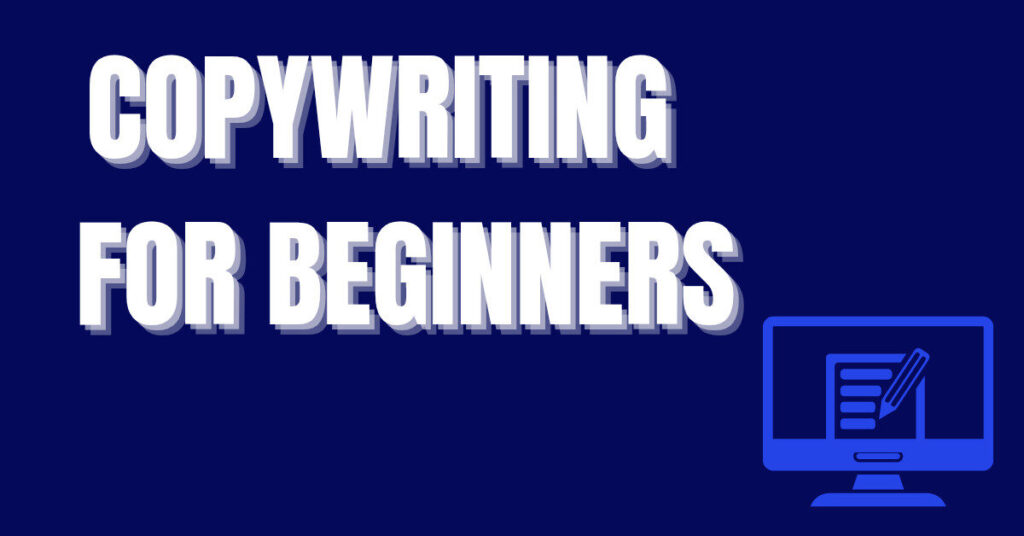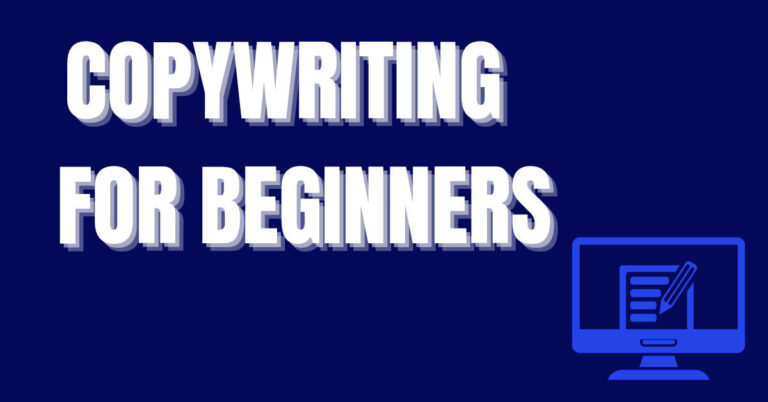
If you’ve ever read an advert, a product page, or a website that made you take action like buying something, signing up, or clicking a link, then you’ve seen copywriting in action.
In today’s digital world, copywriting is one of the most valuable digital skills you can learn. Whether you’re building a career, starting a business, or freelancing online, understanding copywriting gives you the power to communicate, sell, and connect with your audience effectively.
In this beginner-friendly guide, we’ll break down everything you need to know about copywriting, from the basics to the types, skills required, how to learn it step-by-step, and common mistakes to avoid.
Understanding The Basics Of Copywriting For Beginners
Copywriting is the art of writing words that persuade someone to take a specific action.
At its core, copywriting involves creating written content called “copy” that motivates readers to take a specific action, such as clicking a link, signing up for a newsletter, or purchasing a product.
Unlike general writing, which focuses on educating or informing, copywriting is about convincing. Consider it to be written salesmanship. Your goal as a copywriter is to guide the reader toward a decision, without sounding forceful or salesy.
In copywriting every sentence serves a purpose, to guide the reader toward a desired action. This means structuring your content so that it captures attention, builds interest, addresses objections, and concludes with a clear call-to-action (CTA).

Here are a few simple principles to keep in mind when writing a copy:
1. Know Your Audience
- Before you write anything, identify who you’re speaking to. Are they students looking for online courses? Small business owners seeking marketing tips? Understanding their needs, challenges, and language helps you tailor your copy so it resonates.
- Use words and phrases that your audience is familiar with. This builds rapport and shows that you “get” their situation.
2. Focus on Benefits, Not Features Only
- Beginners often make the mistake of listing features (e.g., “Our software has a built-in analytics dashboard”). Instead, emphasize benefits (e.g., “Track your website’s performance in real time without technical headaches using our software”).
- Benefits answer “what’s in it for me?”. By highlighting how your product or service solves a problem or improves life, you tap into your reader’s motivations.
3. Craft a Clear Call-to-Action
- Every piece of copy should end with a straightforward CTA: “Sign up now,” “Download your free guide,” or “Start your 7-day trial.”
- Avoid vague CTAs like “Click here” without context. Tell the reader exactly what they get and why it matters.
4. Keep It Simple and Conversational
- Use short sentences and everyday language. Pretend you’re speaking to a friend. This makes your copy feel more approachable.
- Avoid jargon unless it’s common to your audience. Explain any necessary technical terms in a concise manner.
5. Test and Iterate
- Copywriting isn’t a one-and-done activity. Test different headlines, CTAs, and paragraph structures to see what resonates best. Over time, data from clicks, conversions, and engagement will guide you to refine your approach.
By mastering these foundational concepts, as a beginner you can begin to write copies that not only reads well but also drives results. As you practice, you’ll notice that the structure becomes more intuitive: a strong headline grabs attention, the body builds value, and the CTA closes the sale.
If you can write clearly and tap into emotions and benefits, you’re already on your way to becoming a good copywriter.
Types Of Copywriting Every Beginner Should Know

There are different types of copywriting depending on the platform, audience, and purpose. Knowing these types helps you figure out where your strengths lie and which areas you might want to specialize in as you grow. Each type has a unique style and purpose, but they all aim to get the reader to act.
1. SEO Copywriting:
This type of copywriting involves writing web content optimized for search engines (Google, Bing, etc.) to rank higher and attract organic traffic.
SEO copywriters use keywords (like “digital marketing”) naturally to improve a page’s visibility on Google. They also ensure the content is helpful, clear, and structured for easy reading.
It helps you understand keyword research, on-page optimization, and content structure. As you learn how search engines rank content, you’ll improve both writing and technical skills
2. Email Copywriting:
Writing emails that get opened, read, and acted on is another form of copywriting.
Email copywriting involves crafting emails that engage subscribers, nurture leads, and drive conversions.
Emails can be newsletters, promotional blasts, automated sequences and onboarding messages.
Each email has a purpose, and every word must earn its place.
3. Social Media Copywriting:
This includes captions, tweets, and ad copy designed for platforms like Instagram, Facebook, and LinkedIn. The goal is to spark interest, build engagement, or drive traffic.
It’s about writing short, engaging posts that get people to interact or follow a brand. It’s all about grabbing attention and encouraging action quickly.
4. Sales Copywriting:
It involves writing persuasive content aimed at driving sales, often used in landing pages, email campaigns, sales pages, and advertisements.
This is where you write to sell a product or service directly. The goal is to convert interest into action. You’ll need strong headlines, benefit-driven writing, and a clear call to action (CTA).
5. Website Copywriting
This includes writing the main content for websites such as the home page, about page, product or service descriptions, and landing pages.
Website copywriting focuses on clearly communicating a brand’s value and leading visitors to take specific actions like contacting you or buying a product. It’s important to balance clarity, persuasion, and brand tone.
6. Content/Blog Copywriting
Also called inbound or educational copywriting, this involves writing blogs, guides, and informational content. Although it doesn’t sell directly, it builds trust and nurtures potential customers.
A blog like this one is a great example of content copywriting.
Writing informative, engaging articles or blog posts designed to educate, entertain, or inform readers.
As you explore and understand these types of copywriting, you’ll discover which one aligns with your interests and goals. Many beginners start with blog content or social media and gradually grow into more advanced forms like sales or email copywriting.
Each type has unique demands, but the underlying principles like clarity, persuasion, and value remain constant across all formats.
Skills You Need To Become A Copywriter

While natural writing ability is a plus, becoming a successful copywriter requires developing several core skills. These skills help you deliver persuasive, error-free, and strategically sound content that aligns with your client’s or employer’s goals.
To succeed in copywriting, you don’t need a degree in English or marketing. What you do need are a few essential skills that you can learn and improve over time with consistent practice.
Here are the core skills you need to develop:
1. Understanding Human Psychology:
Copywriting is centered on convincing people to take action. This means you need to understand what motivates people. You need to understand their desires, pain points, emotions, and behavior. Knowing how to trigger emotional responses in your writing gives your copy power. Effective copy taps into the reader’s emotions and motivations.
By understanding persuasion principles like social proof, authority, scarcity, and reciprocity, you can craft copy that moves readers to act. Study classic books on persuasion (e.g., “Influence” by Robert Cialdini). You can also analyze high-converting sales pages or email campaigns to see how they leverage psychological triggers in customers.
2. Research Skills:
You need to understand the topic, audience, and competition before writing effective copy. Thorough research ensures that your copy is accurate and relevant. Identify credible sources (industry reports, expert interviews, authoritative blogs), take notes on key points, statistics, and interesting anecdotes that support your message. You can’t write a good copy without research.
You need to learn about the product or service, the audience, and the competition. At the same time, creativity helps you stand out. Whether it’s finding a fresh way to say something or writing a catchy headline, creativity sets you apart from average writers.
3. Strong Writing and Grammar Skills:
As a copywriter, your words are very important. You need to know how to structure sentences, use punctuation correctly, and write in a clear and persuasive way.
Related Posts
Good grammar helps build trust, and clear writing keeps your audience engaged. You should be able to write in simple language that your audience understands and connects with.
4. Editing and Proofreading:
Great copywriting comes from rewriting, editing, and refining your message. You’ll need to polish grammar, check structure, and remove unnecessary words. Typos and grammar errors kill trust. Learn to edit your work or use tools like Grammarly to polish your copy before publishing.
Other useful skills include storytelling, SEO basics, attention to detail, and the ability to receive and apply feedback. These skills can all be learned over time with practice. By cultivating these skills, you position yourself as a versatile, reliable copywriter who can handle diverse projects.
How To Learn Copywriting Step By Step
Learning copywriting is not difficult, but it requires intention and consistency. Here’s a beginner-friendly, step-by-step guide to help you start your copywriting journey.

Step 1: Learn the Foundations
Start by understanding what copywriting is and what it is not. Read beginner-friendly books like “Everybody Writes” by Ann Handley or “The Adweek Copywriting Handbook” by Joseph Sugarman. You can also find free courses on platforms like Coursera, HubSpot, and YouTube. You can as well opt for paid training with agencies like Techsisi.
Step 2: Study Great Copies
Look at landing pages, emails, ads, and social media posts from popular brands. Analyze how they use headlines, CTAs, emotional triggers, and structure. Save copies that inspire you, this becomes your “swipe file” for future ideas.Subscribe to newsletters from top copywriters as well.
Step 3: Practice Writing Every Day
Select a product or service and write about it. Practice writing headlines, product descriptions, or mock emails. The more you write, the better you get. You can even rewrite popular ads or blog intros as a learning exercise. Spend 10–15 minutes daily crafting 5–10 headlines for a hypothetical product. Use power words (“Secret,” “Proven,” “Ultimate”) and consider emotional triggers.
Step 4: Get Feedback and Improve
Join copywriting or writing communities on Twitter, LinkedIn, or Facebook. Share your work and ask for feedback. Share your practice pieces and ask for constructive feedback on clarity, persuasion, and grammar. Revise based on feedback. Incorporate suggestions and note recurring patterns (e.g., “I need stronger CTAs,” “My headlines are too vague”).
Step 5: Start Building a Portfolio
As you practice, compile your best work into a simple portfolio. You can create a free blog or use platforms like Notion or Contently. A strong portfolio helps you apply for internships, freelance gigs, or in-house roles. Create sample landing pages or blog posts for imaginary clients in niches that interest you (e.g., a fitness coach, a SaaS startup. Offer your services to local nonprofits or small businesses. Even a short blog post or social media ad can demonstrate your abilities.
Step 6: Deepen Your Knowledge with Advanced Courses and Mentorship
Enroll in specialized online courses online. Consider finding a mentor, an experienced copywriter who can review your work and share career advice.
Read industry blogs and case studies to stay updated on trends and emerging best practices.
Advanced courses and mentorship refine your technique, expose you to new niches (like technical copy or video scripts), and help you network within the industry.
By following these step-by-step actions, studying principles, practicing, seeking feedback, and building a portfolio, you’ll evolve from a beginner to a confident copywriter capable of handling real-world projects and delivering measurable results
The key is to be consistent. Even if you write one copy per day, you’ll improve rapidly in just a few months.
Mistakes To Avoid When Practicing Copywriting

1. Writing for Yourself Rather Than Your Audience:
Using jargon, insider talk, or focusing on what you find interesting rather than what the reader wants. If your audience can’t relate to your language or needs, they’ll disengage.Create a simple persona for your target reader: age, occupation, pain points, goals. Before you write, ask: “Why does this matter to them?” and “What problem am I solving?” Read your copy aloud and imagine you’re speaking to that person.
2. Including Too Many Features Instead of Benefits:
Listing too many technical details (features) without explaining how they improve the user’s life (benefits). Readers often don’t care about technical specs, they care about results. After pointing out a feature, ask “So what?” to uncover the underlying benefit. Always pair a feature with its benefit.
3. Weak or vague Headlines:
Headlines that are generic, overly wordy, or fail to highlight a clear benefit.The headline is the first thing readers see; if it doesn’t grab attention, they won’t read further. Follow headline formulas such as “How to [Achieve Benefit] Without [Pain Point]” or “X Ways to [Desirable Outcome].” Test multiple headline variations. Write at least five options, then choose the strongest one based on clarity and promise. Use power words (“Proven,” “Ultimate,” “Simple”) sparingly to convey urgency or importance.
4. Ignoring SEO Best Practices:
Keyword stuffing (overusing the target keyword) or not using keywords at all. Keyword stuffing can result in a bad user experience and search engine penalties. Not using keywords means missed opportunities for organic traffic. Perform basic keyword research: identify a primary keyword (e.g., “Digital marketing for beginners”) and a few related long-tail keywords. Aim for a keyword density of around 1–2% (roughly one mention per 100 words) Place the primary keyword in the title, at least one subheading, the first 100 words, and once in the conclusion, ensuring it flows naturally.
5. Skipping Proofreading and Editing:
Typos, grammatical errors, and awkward phrasing damage credibility and distract readers. Before editing, take a break from your manuscript for at least 30 minutes.
Read aloud or use text-to-speech tools to identify awkward sentences. Use tools like Grammarly to catch mechanical errors, then manually verify suggestions to ensure accuracy.
6. Overlooking a Clear Call-to-Action:
Ending your copy without telling the reader what to do next is a big mistake.
Even if your content is compelling, readers may not know how to engage further (subscribe, buy, learn more).
Decide on one primary objective for each piece of content (e.g., “Download the e-book,” “Sign up for the newsletter”). Use a short, direct CTA that conveys the benefit (“Get Your Free Guide,” “Join the Community”).
Place CTAs in multiple strategic locations: after a major section, and again at the conclusion of the piece.
7. Trying to Appeal to Everyone:
Writing a generic copy that attempts to resonate with a broad audience instead of a specific group. Generic messages lack focus and fail to connect deeply with any one group’s needs. Narrow your audience focus: describe demographics, interests, and pain points in detail. Tailor your language and examples to that specific group. It’s better to write great copy for a small, targeted audience than mediocre copy for the masses.
By being aware of these common pitfalls and actively avoiding them, beginners can accelerate their growth and produce higher-quality copy from the outset. Remember, even seasoned copywriters make mistakes.
What sets professionals apart is their ability to recognize errors, learn from feedback, and continuously refine their approach.
Copywriting is a powerful skill that combines creativity, psychology, and strategy. For beginners, the journey begins with understanding fundamental principles.
Familiarizing yourself with different types of copy like SEO, sales, content, email, and social media, helps you adapt to various projects and niches.
Developing essential skills such as strong grammar, research proficiency, persuasive writing, and basic SEO knowledge lays the groundwork for success.
Over time, real-world practice and feedback will solidify your abilities, transforming you from a novice into a confident, impactful copywriter.
Keep improving your skills, be inquisitive, and enjoy the experience. With dedication and consistent practice, you’ll master copywriting and create compelling content that drives results for any brand.
Tags: Copywriting for beginners How to learn copywriting from scratch How to write a good copy What is copywriting?








